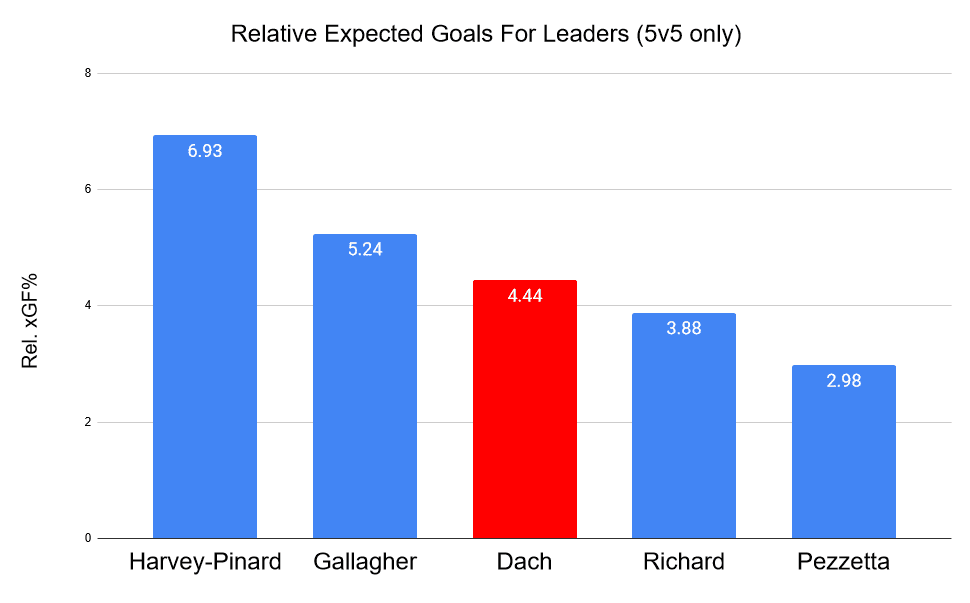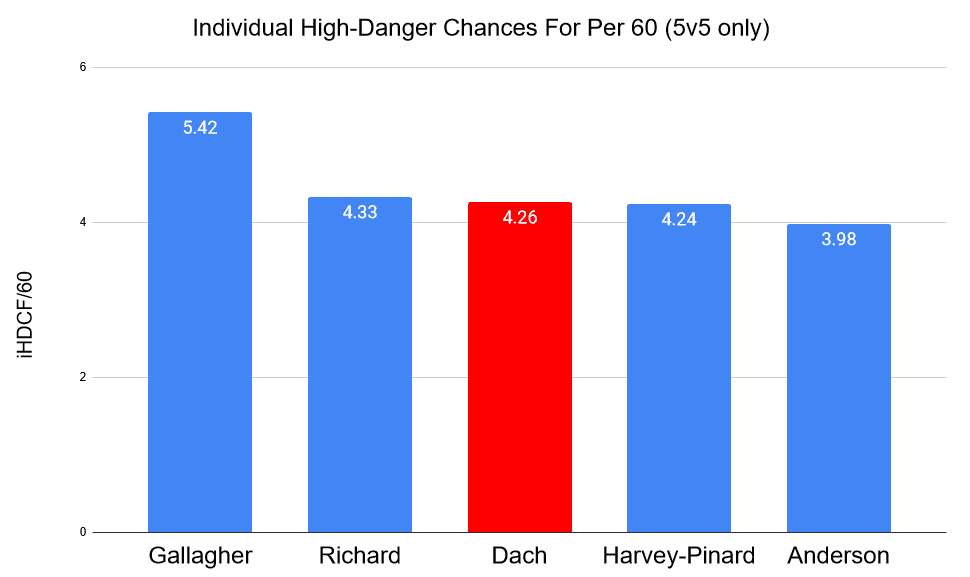Canadiens Analysis
Kirby Dach Trade Proving To Be Crucial For Canadiens Rebuild

Expectations were relatively low when the Montreal Canadiens acquired Kirby Dach on July 7th.
He was coming off a somewhat disappointing 26-point season with the Chicago Blackhawks, and despite having the type of size and talent that justified a third-overall choice in 2019, the team that drafted him decided it was already time to move on.
It turns out in Montreal was a godsend for the 22-year-old centre, and Dach quickly took advantage of his opportunity.
Not only did the Canadiens have a desperate need for more center depth, but they were also looking for players that could serve as part of the foundation for their rebuild.
A Fresh Start
It’s always difficult to judge the results from someone who is playing on an awful team, which was the case with Dach in Chicago.
We can verify their relative numbers, which judge their performance versus those of their teammates, and that does give us a better idea of their impact.
In Chicago, Dach was a drag on the possession numbers, to the tune of -0.14, -5.14, and-1.06 during his first three seasons in the league. It’s worth noting his second season stands out as an outlier and lines up with his season-ending wrist surgery.
On that note, it’s still worth remembering that the Canadiens took a significant chance by not only acquiring Dach in a trade but also by signing him to a four-year contract extension that pays him $3,362,500 in annual average value.
The Canadiens aren’t exactly a powerhouse team, but the opportunities they offered Dach, which centred on top-six assignments, led to a significant uptick in all key underlying numbers, including his relative shot possession, which climbed to 2.77. His relative shot share numbers also revealed Dach made a positive impact in shots for, as well as shots against.
Kirby Dach steals the puck, dekes Evander Kane and feeds Christian Dvorak for the shorthanded goal.
6-2 Habs! pic.twitter.com/DER83XdA7H
— Scott Matla (@scottmatla) February 12, 2023
In essence, he became a possession-driving player for Martin St-Louis’ team, the type of player that improves all his teammates due to his ability to drive the play in transition.
By The Numbers
With 14 goals and 24 assists in 58 games, Dach easily eclipsed his previous career highs in production.
More importantly, he was also excellent in most important statistical categories, including relative expected goals for (Rel. xGF%), where he finished third among all Canadiens forwards.
Not only did Dach help his teammates improve their production, as well as their possession numbers, but he was also among the team’s top 5 players in terms of creating individual high-danger chances, with 4.26 per 60 minutes of 5v5 ice time.
For reference, Dach produced just 2.62 high-danger chances per 60 in his last season with the Blackhawks.
Teammates
Dach’s greatest achievement occurred when he played on the top line, alongside Nick Suzuki and Cole Caufield.
Without Dach, Suzuki and Caufield controlled 41 percent of the shots this season, as well as just 22 percent of the high-danger chances, an incredibly worrying number that led to a paltry 30 percent of the expected goals.
The duo actually controlled more than half the goals while they were on the ice without Dach, however, their underlying numbers indicated it was far from an ideal situation moving forward.
Once Dach was added to the mix, the top line controlled over 52 percent of the shots, 51 percent of the high-danger chances, and 50.5 percent of the expected goals.
Make it 8 goals in 12 games for Cole Caufield. Nice assist from Kirby Dach to set it up. pic.twitter.com/DqXXzKgwNO
— Shayna (@hayyyshayyy) November 5, 2022
In other words, the line’s production rate immediately went from unsustainable to sustainable.
The same phenomenon occurred whenever Dach was added to a line, whether he played on the wing, as he did with Suzuki and Caufield, or as a centre, which was the case when he played on the second line.
Moving Forward
The Canadiens mentioned on a few occasions that they’d prefer to keep Dach as a centre, and there’s definitely value to reinforcing centre depth in the NHL.
However, his impact on the top line simply cannot be ignored.
No other player managed to push Caufield and Suzuki to above-replacement underlying numbers, and we all know how important it is to have a strong, reliable top line in the NHL.
Sublime pass by Kirby Dach to Cole Caufield, and he's not missing that.
4-2 #Habs pic.twitter.com/Rn83qo8v0E
— Matt Drake (@DrakeMT) January 13, 2023
There’s an argument to be made about Dach’s impact on the second line, which was significant due to his strong transition play, but more than anything, that simply reveals the Canadiens’ lack of talent down the middle.
If the Canadiens manage to acquire a high-end centre, perhaps even one named Pierre-Luc Dubois, Dach can resume his play as a winger on the top line, and the team would finally have two lines that are not only able to produce but can also do it in a sustainable manner.
It’s also worth keeping in mind that Dach is, well, frankly, awful at faceoffs, winning a little over 35 percent of his faceoffs throughout his career.
Regardless of where Dach ends up, as a winger or a centre, one thing is certain, the Canadiens found the type of unicorn most NHL teams are desperate to acquire: a big player who is great at driving the play, has significant untapped potential, and makes everyone around him better.
Simply put, whenever Dach was on the ice, the Canadiens were a respectable team from a statistical point of view, which is a considerable achievement when you consider they were among the bottom five teams in most important statistical categories.
All statistics are 5v5 unless otherwise noted, via NaturalStatTrick.











